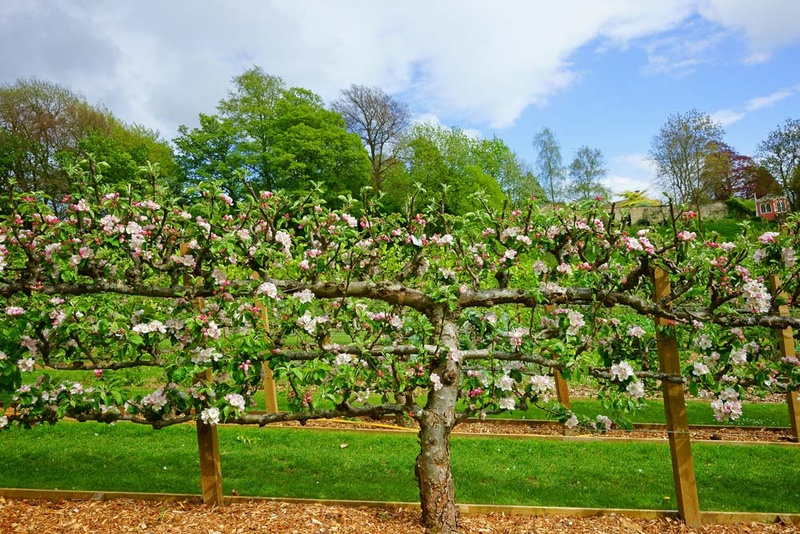
Creative Garden Solutions: Espalier Fruit Trees
Introduction to Espalier Fruit Trees
Transform your garden with the artful technique of espalier fruit trees. Espalier is a horticultural practice where trees are trained to grow flat against a wall or trellis, creating a stunning and space-saving display of fruit-bearing branches. This centuries-old technique not only adds beauty and elegance to your garden but also maximizes fruit production in limited spaces. Let’s explore the world of espalier fruit trees and discover how you can incorporate this unique gardening practice into your outdoor space.
The Art of Espalier
Espalier is more than just a gardening technique – it’s an art form. Originating in Europe during the Renaissance period, espalier was used to create ornamental and productive garden displays in the confined spaces of walled gardens and courtyards. Today, espalier remains a popular technique for home gardeners and landscapers looking to add a touch of elegance and functionality to their outdoor spaces. By carefully pruning and training the branches of fruit trees, you can create intricate patterns and designs that enhance the beauty and charm of your garden.
Space-Saving Benefits
One of the primary advantages of espalier fruit trees is their space-saving nature. By training fruit trees to grow flat against a wall or trellis, you can maximize fruit production in small or narrow garden spaces. This makes espalier an ideal solution for urban gardens, balconies, patios, and other areas where space is limited. With espalier fruit trees, you can enjoy a bountiful harvest of fresh, homegrown fruit without sacrificing precious garden space.
Fruit Varieties for Espalier
Almost any fruit tree can be trained as an espalier, including apples, pears, peaches, cherries, and citrus fruits. When selecting fruit varieties for espalier, it’s essential to consider the climate and growing conditions in your area, as well as the desired shape and size of your espalier design. Dwarf and semi-dwarf fruit trees are often preferred for espalier, as they are more manageable and easier to train than standard-sized trees. Choose fruit varieties with strong, flexible branches and a compact growth habit for the best results.
Training and Pruning Techniques
Training and pruning are key components of successful espalier fruit tree cultivation. Start by selecting a young fruit tree with flexible branches and a healthy growth habit. Plant the tree in a sunny location with well-drained soil, then begin training the branches to grow flat against a wall or trellis using a series of wires, stakes, or supports. Prune the branches regularly to maintain the desired shape and encourage fruit production, removing any unwanted growth or crossing branches.
Design Options
Espalier fruit trees offer endless design possibilities, from simple horizontal cordons to intricate lattice patterns. Popular espalier designs include the fan shape, where branches are trained to radiate outward from a central point, and the candelabra shape, where branches are trained to grow horizontally in multiple tiers. Experiment with different training techniques and patterns to create a unique and eye-catching display that complements your garden’s aesthetic and layout.
Care and Maintenance
Proper care and maintenance are essential for keeping espalier fruit trees healthy and productive. Water the trees regularly, especially during hot and dry periods, and fertilize them annually with a balanced fertilizer to promote growth and fruit production. Monitor the trees for pests and diseases, and take appropriate action to prevent or treat any issues that arise. Prune the trees regularly to maintain their shape and encourage fruiting, and provide adequate support for the branches to prevent breakage.
Harvesting and Enjoying
With proper care and attention, your espalier fruit trees will reward you with a bountiful harvest of fresh, homegrown fruit. Harvest the fruit when it’s ripe and ready to eat, taking care to handle it gently to avoid bruising or damage. Enjoy your harvest fresh from the tree, or use it to create delicious homemade jams, preserves, pies, and other culinary delights. With espalier fruit trees, the possibilities are endless, and the rewards are sweet.
Conclusion
In conclusion, espalier fruit trees offer a creative and space-saving solution for gardeners looking to maximize fruit production in limited spaces. By training fruit trees to grow flat against a wall or trellis, you can create stunning and productive garden displays that enhance the beauty and functionality of your outdoor space. Whether you’re a novice gardener or an experienced horticulturalist, espalier fruit trees are a versatile and rewarding addition to any garden. So why wait? Start planning your espalier fruit tree garden today and enjoy the beauty and bounty of homegrown fruit for years to come.









